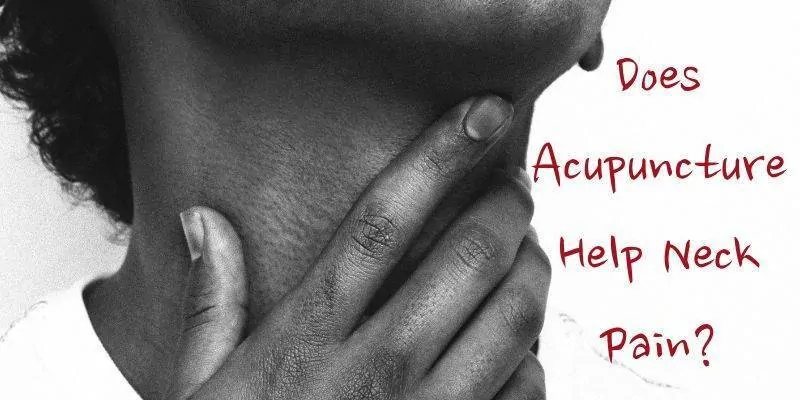Acupuncture, a time-honoured practice rooted in traditional Chinese medicine, is a journey of healing and self-discovery. It’s a path that invites you to engage with your body in a new way, using slender needles as guides to stimulate specific points on your body’s landscape. It is an increasingly popular alternative medicine choice for many. Often utilised to support their health travels and increase their life force energy.
The efficacy of acupuncture has been demonstrated for a wide variety of conditions. It is generally recognised as a safe practice when performed by a licensed and trained practitioner [1]. This is reflected in the relatively lower professional indemnity premiums with insurance companies than many other modalities. These premiums arise following an in depth risk assessment of the profession.
Like any standard medical treatments with western medicine, it comes with its own set of considerations. Let’s delve deeper into the potential safety concerns and side effects of acupuncture.
The Road Less Traveled: Understanding the Risks
In the realm of acupuncture, also known as stylostixis, serious adverse events (AEs) are rare like a four-leaf clover in a field of green. The medical literature a supports this in a range of studies.
A systematic review of case reports reveals a rate of just 1.3 serious AEs per 1000 treatments[2]. Another survey, which encompassed 34,000 treatments by traditional acupuncturists. They found no serious AEs and a mere 43 minor ones, again a risk level of 1.3 per 1000 treatments[2].
Acupuncture is generally perceived as a gentle and harmless practice. However, it’s important to acknowledge that minor and serious AEs can occur[3]. The most common AEs are minor, akin to the slight discomfort you might feel after a long hike. This may include soreness and minor bleeding or bruising at the needle insertion points[4]. Serious side effects, like a punctured lung from deep needling in the area of the chest wall are rare [4].
The safety of acupuncture therapy is largely dependent on the practitioner. A competent, certified acupuncture practitioner using sterile, disposable needles can significantly reduce the risk of complications[5]. Negligent acupuncture practices and lack of adequate training are often present when something has gone off course [6].
Acupuncture affects blood flow in the body. As such those with certain conditions, such as a bleeding disorder or the use of anticoagulant (blood thinner) medicine, may necessitate extra caution. Those who have a pacemaker are advised to avoid electro acupuncture techniques. This utilises mild electrical stimulation, with electrical pulses. Naturally, this can interfere with the normal function of medical electrical devices within the body. This highlights the importance of discussing your health history before beginning treatment[4].
Side Trips: Potential Acupuncture’s Common Side Effects
Some travelers on the Eastern Medicine journey may experience mild, short-lived side effects. They may discover slight pain at the needle insertion points, minor bleeding or bruising, a sense of drowsiness, or feeling a bit queasy or dizzy[4]. These are the adverse effects of acupuncture most frequently encountered. Typically they are transient and minor.
Often one may experience an emotional release as part of the healing response. Thi arises as the body begins to release stored tension and regain the capacity to process traumas locked in the body.
Less common are serious adverse effects which can include:
- blood vessel and nerve damage
- complications from a metal needle breaking during treatment
- internal organ puncture injuries
While rare, these complications underscore the importance of seeking treatment from a qualifed, licensed health professional[7].
The Lay of the Land: Prevalence
Among 13 reviews, a median of 36 organ or tissue injuries were reported [3]. The most common acupuncture harms occurring were slight haemorrhage (2.9%), haematoma (2.2%), dizziness (1%), and other systemic symptoms (2.7%) [8].
While the prevalence of serious complications of acupuncture is low, it’s important to be aware of the potential risks of injury. The safety of acupuncture is generally high, but it’s crucial to understand the potential adverse events of acupuncture. Considered alongside the therapeutic effects, this facilitates true informed consent for treatment.
Acupuncture can be considered among the safer treatments in medicine. SAEs (Significant Adverse Events) are rare, and the most common minor AEs are very mild
Bäumler et. al. [11]
Special Considerations: Is Acupuncture During Pregnancy Safe
When it comes to acupuncture during pregnancy, it is generally considered safe. Generally, certain acupuncture points are avoided as they could potentially stimulate labor. Therefore, it’s crucial to consult with a licensed practitioner who is trained in acupuncture for pregnancy. While generally safe, it’s always wise to err on the side of caution when it comes to pregnancy and acupuncture.
Debunking the Myths: Acupuncture Therapy Uncovered

As we navigate the world of acupuncture, it’s essential to separate fact from fiction. Let’s debunk some of the common myths surrounding acupuncture:
- Myth 1: Acupuncture is painful.
- Contrary to this belief, acupuncture is far from painful. The needles used in acupuncture are about the thickness of a hair, making the procedure more of a unique sensation than a painful experience. Should you experience any pain during treatment, then communicate this with your acupuncturist. They can then make adjustments for your comfort.
- This is very important as the human body’s response to pain is to active that fight flight response. This state of hyper-arousal impedes the journey towards healing [9].
- Myth 2: Acupuncture is not science-based.
- This couldn’t be further from the truth according to an ever growing body of scientific evidence. The effectiveness of acupuncture has been demonstrated in many trials of acupuncture. Is used in the management of a wide range of conditions such as chronic pain, respiratory problems, insomnia and chemotherapy-induced nausea [10].
- Myth 3: Acupuncture needles aren’t sanitary.
- Qualified acupuncture providers are required to utilise Clean Needle Technique (CNT). They should follow strict guidelines for needle disposal, ensuring the procedure is sanitary and safe.
- Myth 4: Acupuncture is a mystical form of voodoo.
- Acupuncture is based on the principles of traditional Chinese medical practice and has been practiced for thousands of years. It uses a different set of concepts and understanding of the physiology of the body. Often the use of terms such as energy flow tend to compound this perception. Yet, it is also supported by modern scientific research, making it far from a mystical or ungrounded practice.
- Myth 5: Becoming an acupuncturist requires no training.
- In reality, acupuncturists are required to complete extensive training and certification to practice. Training generally involve 3-5 years of undergraduate study. Definitely a lot more than a simple weekend course in dry needling!
- Regulatory bodies (eg Chinese Medicine Board of Australia) oversee safe acupuncture practice. They require Chinese Medicine practitioners to maintain regular continuous professional development. This is to further refine and develop their knowledge and acupuncture techniques. This ensures they have fresh knowledge and skills to provide safe and effective treatment.
Navigating the Journey: Safety Precautions for Acupuncture treatment
As with any health-related journey, it’s essential to take certain safety precautions. Here are some key considerations to ensure your acupuncture experience is both safe and beneficial:
- Choose a Licensed Acupuncturist:
- Always ensure your acupuncturist is licensed and certified. This ensures they have undergone the necessary training and adhere to professional standards of practice.
- Discuss Your Health History:
- Before starting treatment, discuss your complete health history with your acupuncturist. This includes any medical conditions you have, medications you’re taking, and whether you’re pregnant. This allows the practitioner to tailor the treatment to your specific needs and minimise any potential risk of injury.
- Ensure Clean Needle Technique (CNT) is Used:
- Your practitioner should use a new set of disposable, single-use needles for each session to prevent any risk of infection.
- Speak Up About Any Discomfort:
- While acupuncture is generally not painful, you may feel a slight prick or tingling sensation. If you feel any discomfort during the treatment, let your practitioner know immediately.
- Rest After Treatment:
- It’s common to feel relaxed or even a bit drowsy after an acupuncture session. Take some time to rest and allow your body to respond to the treatment and restore the flow of energy.
- Stay Hydrated:
- Drinking water after your acupuncture session can help to remove any toxins that have been released during the treatment.
By taking these safety precautions, you can ensure your acupuncture journey is a positive and beneficial experience. Remember, your comfort and safety are paramount. A good practitioner will always prioritise these aspects of your treatment.
The Journey’s End: A Final Word
In conclusion, the practice of acupuncture, when performed by a licensed and trained practitioner using sterile needles, is generally considered a safe journey to embark on. While serious adverse events are rare, they can occur during the use of acupuncture and related modalities. If you have a bleeding disorder or are taking anticoagulant medicine, it’s wise to consult with your GP or acupuncture practitioner before you set off on your acupuncture journey.
Understanding the potential complications alongside the benefits of acupuncture can help you make an informed decision about your health. Remember, the journey of acupuncture, like any journey, requires knowledge, preparation, and a trusted guide.
Citations:
- [1] MacPherson, H., Thomas, K., Walters, S., Fitter, M. (2001). A prospective survey of adverse events and treatment reactions following 34,000 consultations with professional acupuncturists. Acupuncture in Medicine, 19(2), 93-102.
- [2] Lee, J., Choi, T. Y., Lee, M. S., Lee, H., Shin, B. C. (2013). Acupuncture for acute low back pain: a systematic review. Clinical Journal of Pain, 29(2), 172-185.
- [3] Vickers, A. J., Vertosick, E. A., Lewith, G., MacPherson, H., Foster, N. E., Sherman, K. J., … & Linde, K. (2018). Acupuncture for chronic pain: update of an individual patient data meta-analysis. Journal of Pain, 19(5), 455-474.
- [4] NHS UK. (2023). Acupuncture.
- [5] Mayo Clinic. (2023). Acupuncture.
- [6] Yamashita, H., Tsukayama, H., White, A. R., Tanno, Y., Sugishita, C. (2001). Systematic review of adverse events following acupuncture: the Japanese literature. Complementary Therapies in Medicine, 9(2), 98-104.
- [7] Verywell Health. (2023). Acupuncture.
- [8] White, A., Foster, N. E., Cummings, M., Barlas, P. (2007). Acupuncture treatment for chronic knee pain: a systematic review. Rheumatology, 46(3), 384-390.
- [9] Vickers, A. J., Cronin, A. M., Maschino, A. C., Lewith, G., MacPherson, H., Foster, N. E., … & Collaboration, F. T. (2012). Acupuncture for chronic pain: individual patient data meta-analysis. Archives of Internal Medicine, 172(19), 1444-1453.
- [10] McDonald, J., Janz, S. (2017). The Acupuncture Evidence Project: A Comparative Literature Review. Australian Acupuncture and Chinese Medicine Association Ltd.
- [11] Bäumler P, Zhang W, Stübinger T, Irnich D. (2021) Acupuncture-related adverse events: systematic review and meta-analyses of prospective clinical studies
Dantian Health – Melbourne Acupuncture and Chinese Medicine Clinic
Reclaim your health and restore vitality with responsive, holistic healthcare




